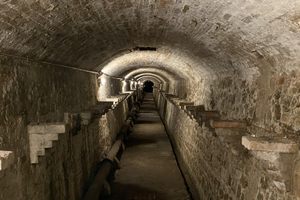About
In the central Piazza Garibaldi is the Governor's Palace, the original building of which dates back to the 13th century. After undergoing numerous changes, its present form dates back to the second half of the 18th century. If you look carefully at the part of the palace on the corner of Via Cavour, you will notice the sample of the "Parmesan brick," the ancient unit of measurement of Parmesan builders, embedded and framed in the wall.
It measures approximately 28 centimeters long, 12 centimeters wide, and 5.6 centimeters thick. The brick measure, displayed in antiquity by the kilnsmen, served to prevent the placing on the market of dwindling sizes and the resulting fraud.
The ancient Italian units of measurement were local units in use throughout the centuries in different parts of Italy. Although they often had similar names, they had very different origins and values. As early as the 11th century, the different local realities realized their own units of measurement. Over time, boundary changes led to heterogeneous units of measurement being brought together under the same administration with obvious problems for duties, taxation, and trade. Rare and not very fruitful were some attempts at unifying units of measurement, for which it would be necessary to wait until the 19th century, when local units of measurement were gradually replaced by the metric system.
Related Tags
Flavors of Italy: Roman Carbonara, Florentine Steak & Venetian Cocktails
Savor local cuisine across Rome, Florence & Venice.
Book NowCommunity Contributors
Added By
Published
July 19, 2023





















